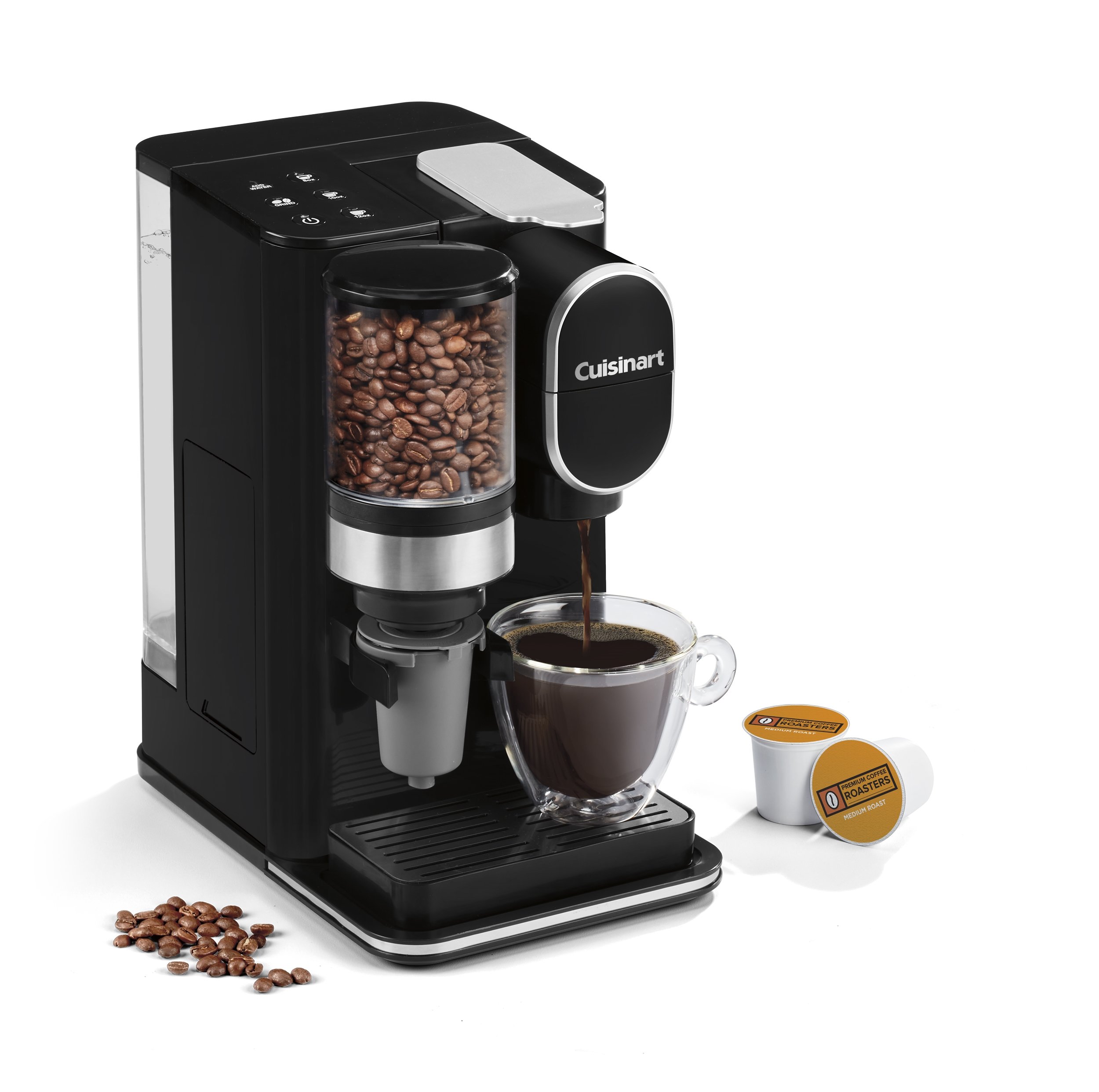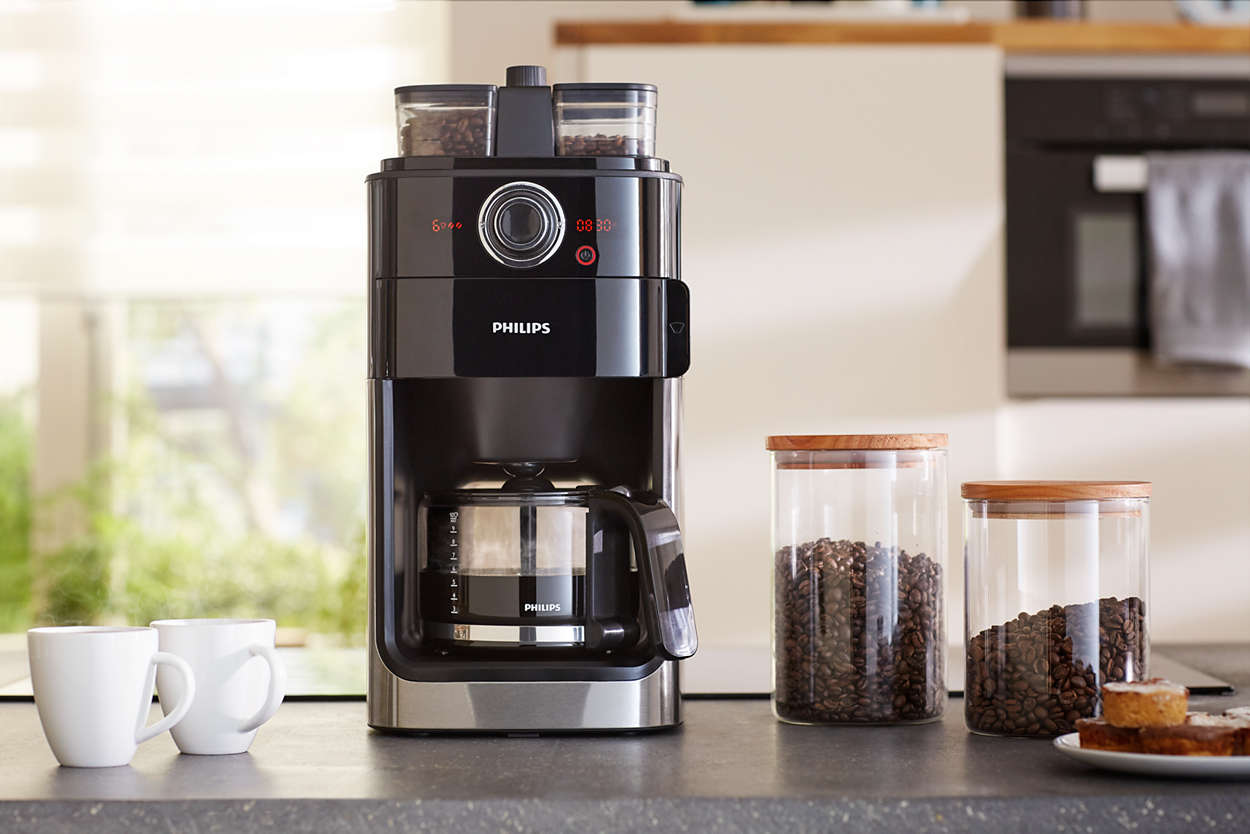Are you on the hunt for the perfect coffee maker? Confused between grind and brew coffee makers? You’ve come to the right place.
In this article, we’ll cover the pros and cons of using a Grind and Brew Coffee Maker, so that you can determine if it’s right for you.
Coffee drinking is a popular activity among individuals of all ages, and having the right device to make coffee can really elevate your experience. Grind and brew coffee makers are an increasingly popular type of coffee maker that provide more robust flavor in your cup of joe.
To understand what these machines have to offer, it’s important to understand the anatomy of a typical model and the benefits each component has for making a cup of great tasting coffee. In this guide, we will discuss the pros and cons of grind and brew coffee makers as well as step-by-step instructions on how to use one.
We will start by exploring how these devices work in general – from prepping whole beans for grinding and steeping to mastering the brewing process – so you can decide if a grind and brew is right for you. Then we will delve into more detailed information about different types of machines available on the market today, including tips on choosing one best suited for your preferences and lifestyle. We’ll also touch on some best practices in terms of grinding consistency, water temperature control, strength settings, cleaning, maintenance and much more. By the end of this guide, you should feel confident in knowing what to look out for when shopping around as well as knowledgeably using any model you choose at home.
Pros of Grind and Brew Coffee Makers
Grind and brew coffee makers provide distinct advantages in their preparation of the perfect cup of coffee. There are several points to consider that make this type of equipment appealing.
➢ Freshness: Since beans are ground just before brewing, the resulting cup offers a unique freshness and flavor that is hard to achieve with pre-ground varieties.
➢ Convenience: Some models come equipped with programmable features allowing you to set alarms for your desired time, so you can wake up to a freshly brewed pot of coffee each morning. These machines also eliminate the need for measuring out beans or grinding them individually by hand.
➢ Customization: Depending on your model, you may be able to select different levels of grind fineness and strength settings, so everyone in the household can enjoy their favorite cup. Additionally, many machines offer adjustable carafe and filter sizes, adding more flexibility to the brewing process.
➢ Savings: Buying whole bean coffee often results in lower costs over pre-ground versions due to longevity; therefore purchasing one of these machines helps offset some of these upfront expenses while still delivering freshness each time it is used.

Freshness of coffee
When it comes to any type of coffee maker, freshness is paramount. With grind and brew coffee makers, the freshest cup of coffee begins with grinding whole beans. Coffee lovers will argue that freshly-ground beans produce the best possible flavor in comparison to pre-ground concoctions.
After the beans are ground, they can then be brewed directly into a carafe, resulting in a quickly prepared and delicious cup of hot joe. Through using grind and brew systems, you will get maximum flavor with minimal bitterness. When made correctly, you should find that the end result is more complex than if you had opted for traditional pre-ground coffee bags.
Cons of Grind and Brew Coffee Makers
Grind and Brew coffee makers have their share of drawbacks as well. Some of the most common ones include:
-Cost: Grind and Brew coffee makers are often more expensive than regular filters. While you could save money in the long run from buying whole beans, ground coffee is also a convenient option for time-strapped consumers.
-Noise: The grinding mechanism used in grind and brew machines can be quite noisy, which might not be ideal if you live in a smaller space or have roommates who would rather not hear loud noises at all hours of the day.
-Time Required: In order to use a Grind and Brew coffee maker, you need to factor in an extra 15 minutes at least for preparing the grinds and then brewing your cup of coffee – making this appliance poorly suited for busy mornings where every second counts.
-Difficulty: It can be tricky to adjust these machines’ settings so as to find the perfect strength, flavor and aroma from your coffee. If you don’t get it right the first time, you may have to go through several trial-and-error rounds before getting it just right – something that consumes extra time and effort that one may not have when pressed for deadlines.
Noise level
When comparing grind and brew coffee makers against other appliances, the noise level is often cited as a potential drawback. This is because the built-in grinders produce a significantly higher level of noise than traditional drip machines. Many describe the noise level as similar to that of a blender or food processor.
It’s important to understand that the amount of noise created by the appliance does vary from model to model, with some being much quieter than others. As with any other kitchen appliance, it’s highly recommended that you conduct a side-by-side comparison between various models in order to make an informed decision before making your purchase.

Additionally, keep in mind that most grind and brew coffee makers are equipped with adjustable settings which allow you to control not only the size of your grind but also the strength and duration of each cup produced. This may enable you to create a cup at a lower noise level in exchange for sacrificing some strength or flavor.
Maintenance and cleaning
When it comes to grind and brew coffee makers, maintenance and cleaning are an important part of regular use. Regularly cleaning the machine according to manufacturer instructions helps avoid issues with over-extraction and bitter coffee caused by buildup of grounds in the brewing chamber and filter.
The process of grinding, brewing, and decanting is more complex than conventional models, so additional steps may need to be taken when it comes time to clean. Start by filling the reservoir with warm water and a mild detergent or vinegar-based solution. Fill up the grinder chamber as well, but do not add any detergents. Let the solution sit in each chamber for 30 minutes before washing out with a damp cloth or sponge. Make sure all parts dry completely before putting back together and reinstalling in its place on your countertop or other location.
You should also remember to descale your machine on a regular basis – generally once a month – as this will help reduce bitter taste from mineral buildup over time due to hard water use. Follow manufacturer instructions for your machine when running through the descaling process.
III. Factors to Consider When Choosing a Grind and Brew Coffee Maker
Before you purchase a grind and brew coffee maker, there are a few essential factors to consider. Start by taking a look at the features and settings of the machine to ensure it meets your needs. Understandably, price is also a factor, so make sure to compare prices from multiple vendors before making your final decision. Here are some other features and considerations to keep in mind when choosing a new machine:
- Brewing Options: Check for adjustable brewing settings like auto-grind settings or programmable start timers that allow you to customize your drink strength before, during or after brewing. Also, some models may allow you to adjust the number of cups being brewed while others may not have this option.
- Grinding Settings: Consider adjustable grind settings or strength selectors that allow you customize your drink according to your taste preferences whether it be light and airy or strong and bold flavors. Additionally, many people like coarse grinding for French press but finer grinding for espresso machines, so make sure the grinder works for both types of beverages if needed.
- Type of Grinder: Burr grinders vs blade grinders… burr grinders offer superior consistency without losing aroma or flavor since heat builds up faster with blade grinders during grinding process due to uneven pressure applied while blades spin which produces an inconsistency in cuts leading to varying sizes of particles ground depending on how long it spins compared with burr grinders which evenly distributes pressure while turning two surfaces against each other resulting in consistent cuts with little build up of heat produced and maintaining aroma/flavor within grounds even after several batches ground going forward regardless… Allowing maximum extraction without burnt/bitter tasting drinks leaving user satisfied with every sip;)
- Capacity and Size: Choose a machine that fits perfectly into kitchen’s physical space considering counter top opening size and also able to store freely accessible such as cupboard shelves near by being able to provide easy access when needed depending on where your plans include storing appliance inside kitchen itself just make sure majority it doesn’t have too large a footprint leaving hardly breathing room especially if deciding on traveling frequently host events!
Type of grinder
When it comes to grinding up coffee beans for use in a grind and brew coffee maker, the type of grinder used makes all the difference. There are two types of grinders that you can choose from: blade grinders and burr grinders.
Blade Grinders – Blade grinders use blades to chop up the beans into pieces. They are easy to use and they often produce a fairly consistent size of grounds, but blade grinders lack some of the precision that is associated with burr grinders. Some models may also struggle with larger bean sizes, so it’s important to check for this when purchasing. Lastly, because blade grinders do not dispense grounds uniformly, a good number of them can lead to inconsistent flavor profiles in your coffee.
Burr Grinders – Burr grinders use two plates (known as burrs) that rotate against one another at different speeds to crush coffee beans into uniform particles more precisely than their blade counterparts. The results provide much more even extraction from your brew and make it easier to ensure that every cup you make tastes exactly as you want it too! However, these machines tend to be more expensive than their blade-style counterparts and may require some extra time and effort when cleaning.
Capacity and brew strength options
Grind and brew coffee makers come in a variety of sizes, and with these differing sizes also comes varying capacities. The smallest machines have capacities ranging from 4 cups to 10 cups, while larger versions can hold up to 12 or more cups. As you might expect, the larger machines will usually cost more than the smaller ones, however many larger sized grind and brew models do offer additional features, such as a built-in timer.
Brew strength is another key consideration when looking at grind and brew models. Many of the automatic machines will feature settings for light, medium, or strong brews. Each setting will grind the beans slightly differently for an optimally brewed cup of coffee, allowing you to create custom drinks without all the hassle. Additionally, some newer models even feature settings for cold brew coffee so you can make a delicious flavored iced drink with ease.
Tips for Using and Maintaining a Grind and Brew Coffee Maker
Grind and brew coffee makers help make preparing your daily cup of joe a breeze. Before you choose one, however, be sure to weigh the pros and cons carefully. And once you make your choice, there are a few key tips to get the maximum use out of your appliance.
When using a grind and brew coffee maker, always keep these key tips in mind:
- Make sure to use fresh beans in an appropriate quantity for the best flavor.
- Test different beans to find the perfect blend for your taste preferences.
- Pregrind beans before pouring them into the grinder chamber to reduce clumps from forming when grinding.
- Clean off the grounds holder after each use to ensure no residue builds up that could cause damage or interfere with future performance of the machine.
- Use filtered water for a better tasting coffee and improved longevity of your machine’s components.
- Perform routine cleaning maintenance approximately once weekly to keep your machine working at its peak performance level.
With these helpful suggestions, you’ll soon be enjoying delicious freshly brewed coffee with minimal hassle thanks to your new trusty grind and brew coffee maker!
Proper storage of coffee beans
Coffee beans have to be stored properly if you want to make sure they maintain their flavor. Coffee beans must be stored in an air-tight container away from heat, light, and moisture. This ensures that they don’t deteriorate or become spoiled over time.
Additionally, because coffee beans are quite porous, it is important to store them in smaller quantities at a time or risk them becoming stale faster than you would like. Grind and brew coffee makers typically come with a storage container for the grounds but you may want to invest in an additional container for keeping your whole beans fresh as well. An air-tight container will help keep your beans fresh longer and prevent them from losing any flavor notes that may have been developed during the roasting process.
Conclusion
The advantages and disadvantages of grind and brew coffee machines depend largely on the individual consumer’s needs. For those that want a more convenient way to make fresh, flavorful coffee with minimal effort, a grind and brew maker may be the best option. On the other hand, for those who are looking for a greater variety of options in terms of flavors, espresso quality, and price, traditional espresso machines may be more suitable. No matter which type you prefer, both machines offer something unique that can make brewing your favorite cup the perfect morning ritual.
In conclusion, at-home brewing has always been an art form that requires knowledge and trial-and-error to get just right over time. Grind and brew makers are a great way to shorten this process by streamlining many of the steps with automated settings while still allowing room for creativity. If you’re ready to take your coffee-brewing skills up a notch without sacrificing flavor or wasting time or money, grind and brew makers may be worth considering as an option.
FAQ’S
Are there any good grind and brew coffee makers?
Yes, there are several good grind and brew coffee makers available in the market from reputable brands like Cuisinart, Breville, and DeLonghi.
What are the cons of coffee maker?
Some of the cons of a coffee maker can be the build quality, maintenance requirements, limited functionality, and the potential for the coffee to taste different based on the quality of water used.
Should you buy coffee machine with grinder?
It depends on your preferences and needs. If you want to have freshly ground coffee every time, then buying a coffee machine with a grinder might be a good option.
What is the common problem of coffee grinder?
The most common problem with coffee grinders is that they can become clogged with coffee grounds, which can affect the quality of the grind and ultimately impact the taste of the coffee.
Which is the best coffee maker for home?
There are several good coffee makers for home use, including the Technivorm Moccamaster, Bonavita BV1900TS, and OXO Brew 9 Cup Coffee Maker.
What is the best kind of coffee maker to buy?
The best kind of coffee maker to buy depends on your specific needs and preferences. Some popular options include drip coffee makers, pour-over coffee makers, and espresso machines.
How do I choose a coffee grinder for my home?
When choosing a coffee grinder for your home, you should consider factors such as the type of grinder (burr or blade), the grind settings, the capacity, and the price.
Is a cheap coffee grinder worth it?
A cheap coffee grinder may be worth it if you are on a tight budget and don’t have high expectations for the quality of the grind. However, a more expensive grinder is likely to produce a better quality grind and last longer.
Is it best to grind coffee daily?
Yes, it is best to grind coffee daily or just before brewing to ensure the freshest possible taste. Coffee begins to lose flavor as soon as it is ground, so grinding just before use is ideal.
What are 3 disadvantages of coffee?
Three disadvantages of coffee can include increased heart rate and blood pressure, disrupted sleep patterns, and increased anxiety or nervousness in some people.
See Also-
- Best compact coffee maker 2023
- Best cuisinart coffee maker 2023
- Best dual coffee maker 2023
- Best grind and brew coffee maker 2023
- Best italian coffee maker 2023


